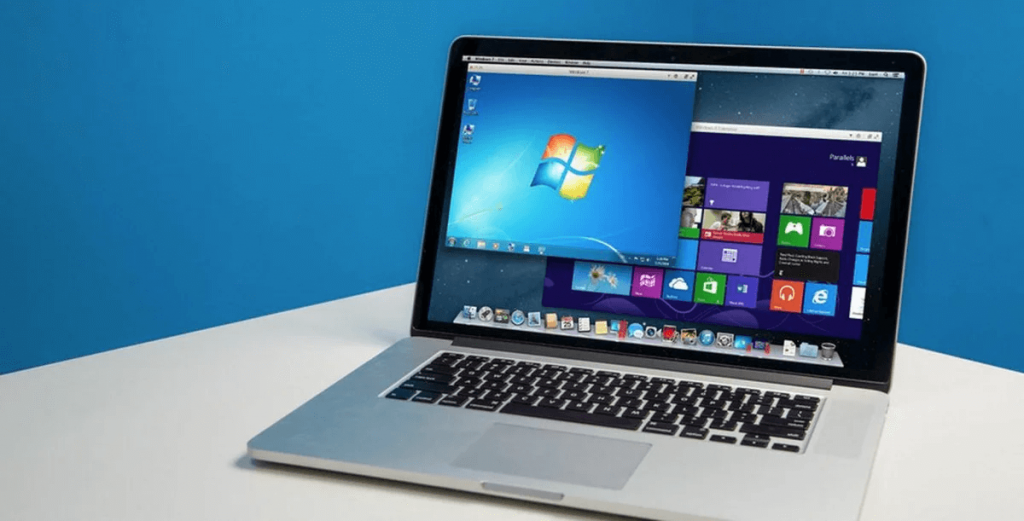

- Dual boot a mac with windows 10 how to#
- Dual boot a mac with windows 10 driver#
- Dual boot a mac with windows 10 pro#
- Dual boot a mac with windows 10 software#
- Dual boot a mac with windows 10 Pc#
If your device is originally installed with Windows 7 or 8 and you’ve upgraded it to Windows 10, your device's product key can no longer be used to reinstall Windows 7 or 8. Dual boot a mac with windows 10 driver#
The lack of a device driver is an indication of the fact that your desktop is not compatible with windows 7.
If your new device is preinstalled with Windows 10, go through the mentioned manufacturer’s website to see if there are windows 7 device driver is available. If, for some reason, your desktop refuses to boot or even crashes midway during the process, be ready with an image backup of windows 10. Dual boot a mac with windows 10 software#
Many times, it so happens that certain software may be compatible with just the old windows, or maybe it is a good idea to have a trail of both versions of Microsoft windows before you decide to switch. As a desktop user, you would want to use the latest operating system and regularly download updates for improved security and ease of use. Some well-known boot manager programs are System Commander, Partition Magic, and LILO.Īll Windows operating systems come with their set of pros and cons. Hence boot manager program starts processing the selected OS.

Dual boot a mac with windows 10 Pc#
When your PC has two operating systems installed, the boot administrator takes place of Master Boot Record (MBR). When you turn on your PC, the boot administrator will inquire you to choose any one of the operating systems you want to work with. It means, it allows the selected OS to load and given control.
Dual boot a mac with windows 10 how to#
How to Dual Boot Windows with Windows 7Ī Dual boot, also known as Multi-Booting, is the way to install multiple operating systems such as Windows 8 and Windows 10 on the same hard drive. Use the Finder application or enter the command below to unmount bless -folder /Volumes/EFI/EFI/BOOT -label "Windows" Use the command shown below to change the label that will be shown below the Windows icon on the Startup Manager menu. Note: When finished, you can use the Finder application to eject the mac-icns volume. This will add the following Windows icon to the Startup Menu. cp /Volumes/mac-icns/os_win8.icns /Volumes/EFI/.VolumeIcon.icns sudo diskutil mount disk0s1Įnter the command below to copy the Windows icon file os_win8.icns to the EFI volume. Open a Terminal application window and enter the command given below to mount the EFI partition ( /dev/disk0s1) containing the Windows boot files. Download a collection of icons from the sourceforge web. Adding an Windows Icon and Label to the Startup Manager Menu This may also require installing an (script) application to select the default in both MacOS and/or Windows. For example, you may have Windows boot files in the EFI/BOOT folder, but not the correct files in the EFI/Microsoft folder on volume labeled EFI in disk0s1.īTW, you can select to the default operating system to boot from macOS and/or Windows by installing rEFInd on your Mac. Or, there is something else wrong, but there is not enough information in your question to diagnose the problem. Again, this may be because you are EFI booting Windows. I am not sure why you can not properly select Windows from System Preferences. The fact that you do not see Windows label on the Start Menu is another indicator that you probably were suppose to BIOS boot Windows. However, if all the hardware is working, there is no harm in EFI booting. You probably were suppose to install Windows to BIOS boot, instead of EFI boot. If anyone knows what’s going on, please let me know! I suspect there’s a nuance or issue with the EFI partition or MBR now that APFS is involved, because I never had this issue before with fresh installs, which this was for both sides - OS X and Windows. So I have to power down and hold option again. 
So, ok, it works, but why does it not say “BOOTCAMP “ or “Windows”?Īlso, if I’m in OS X and I go to the System Preferences and choose BOOTCAMP as my startup disk and restart the computer, it boots into nothing and says there’s no startup disk. If I select that, I boot into Windows 10. But I don’t see one for Windows (BOOTCAMP). When you hold down the option key at bootup, I see a hard disk icon with “Macintosh SSD” - obviously that’s OS X. However, I have another perplexing issue.or simply curiosity. I understand that Windows will not know what APFS is, and so Bootcamp will not work while using Windows if you want to switch over to OS X by using Bootcamp.
Dual boot a mac with windows 10 pro#
I have been able to successfully dual boot a 2011 Macbook Pro with Windows 10 before when OS X still used the HFS file system, but things have obviously changed with how the system boots with APFS.







 0 kommentar(er)
0 kommentar(er)
